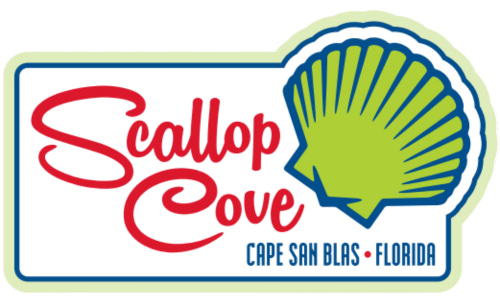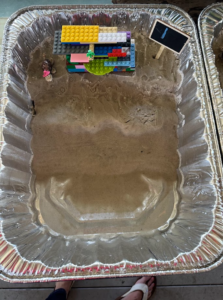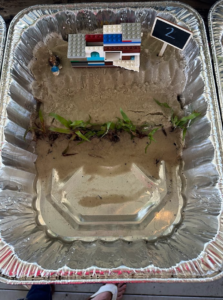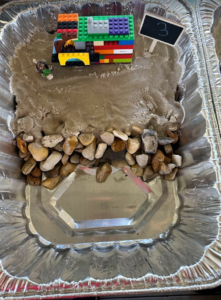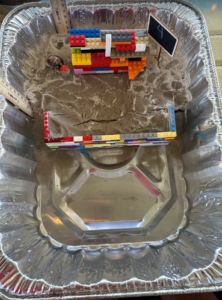Preventing Local Beach Erosion
5th Grade Science Fair Project on Local Beach Erosion
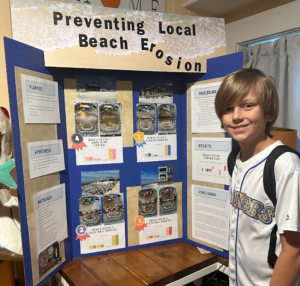
My name is Crue and I am in 5th grade at Port St Joe Elementary School. I decided to do my project on beach erosion because over the 7 years we have lived here, so much of the beach has disappeared. I love spending time at the beach and want to continue to have a beach to play on. I wanted to know the best way to help stop beach erosion and below is my research.
Purpose:
Which method of beach erosion prevention is the most effective? The prevention methods being tested will be:
- No barrier, just natural sand exposed to waves
- Mangrove forests and other planted barriers
- Rock walls
- Block walls
Materials:
- Four rectangle containers (one for each test method)
- Natural beach sand
- Lego bricks for beach houses
- Shell turtles for decoration
- Fresh water
- Empty water bottle for “wave making”
- Grass (to copy Mangrove roots) for plant barrier
- Stones from yard for rock wall
- Lego bricks for block wall
- Rulers for measuring sand erosion
- Photos of current beach erosion prevention methods in our area
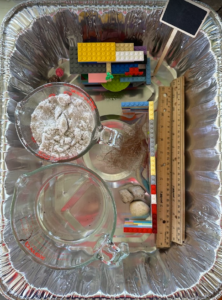
Hypothesis:
I will be testing methods of beach erosion prevention. I hypothesize that healthy, planted seagrass and mangroves will be a better barrier to erosion than other methods.
Procedure:
- Build 4 beach dioramas in rectangle containers.
- Fill each with 12 cups of natural beach sand in back.
- Place one Lego beach house and shell turtle on each container
- Build each variable below for testing:
- Beach sand dune
- Beach sand dune with planted grass
- Rock wall made with pebbles and stones
- Lego block bulkhead wall
- Add equal parts water (6 cups) to create a “tide line”.
- Measure sand depth at 4 locations.
- How deep the sand is in the back of the container
- How deep the sand is on the side of the container
- How far the sand moved from the tide line
- How far the barrier wall moved
- Press water bottle down into water 30 times slowly to create waves.
- Re-measure sand depth at same 4 locations to measure sand erosion.
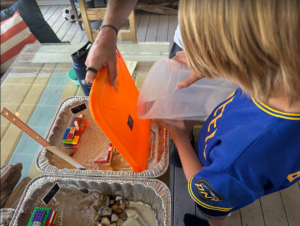
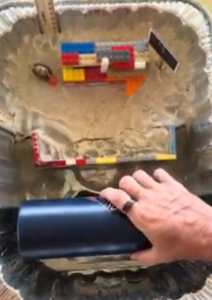
Local Examples:
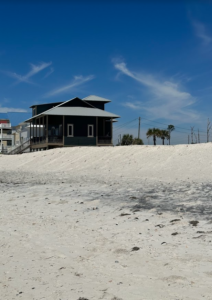
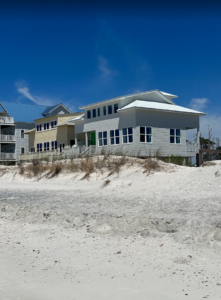
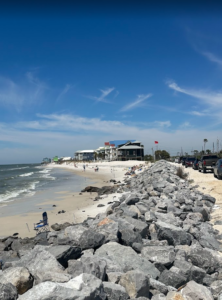
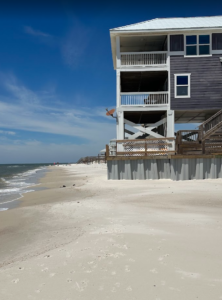
Before Photos:
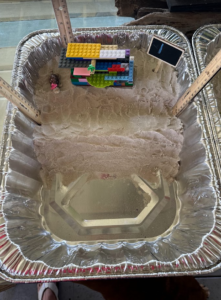
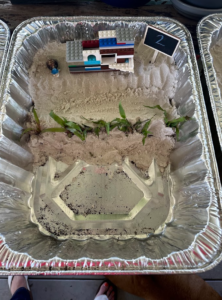
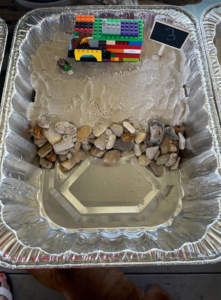
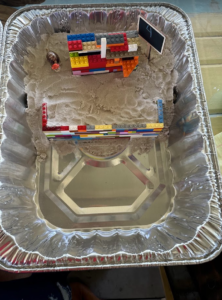
After Photos: (Click on photo to watch video wave action)
Results & Method of collection:
I will measure the depth of sand in four spots in the container:
- How deep the sand is in the back of the container
- How deep the sand is on the side of the container
- How far the sand moved from the tide line
- How far the barrier wall moved
I will measure these depths before I begin creating waves. After I press the empty bottle into the water 10 times, at a steady rate, I will remeasure the depth of sand at those same 3 points to identify if sand has stayed, or eroded. I will present my findings in a chart showing which of the erosion prevention methods worked the best.




Conclusion:
My goal is to identify which method of beach barrier improvements works best for stopping beach sand erosion on our local beaches. My hypothesis was that planted seagrass and mangroves would be the best. The results of my test support my hypothesis, but the rockwall was very close to being equally as effective.
First Place:
House 2 (planted grass) was the most challenging condition to copy on a small scale. The results showed the planted grass protected the inland side of the dune very well, but the sand did wash away from the sea side of the dune. This is also shown in photos taken on Cape San Blas, but the seagrass did protect the beach house and kept the sand in place beyond the dune, and this test showed the best results, with the least amount of sand depth lost.
Second Place:
House 3 (rock wall) kept the sand depth well. The water pushed through the rocks, and up into the sand creating holes behind the rock wall. The sand depth dropped just behind the wall because of this, and visible sand loss can be seen in the after photos.
Third Place:
House 4 (block wall) had a structural fracture within the entire dune early on in the test. My test wall may not have been anchored well enough to work. The sand washed away from around the ends of the wall, but maintained its depth beyond the wall and near the beach house. This test method was the 3rd best option.
Last Place:
House 1 (no barrier) suffered the worst sand loss during the test, with sand washing away from the beach. “Displaced sand” is shown in the results chart, and this model had the only measurable amount of displaced sand washed out into the pan.
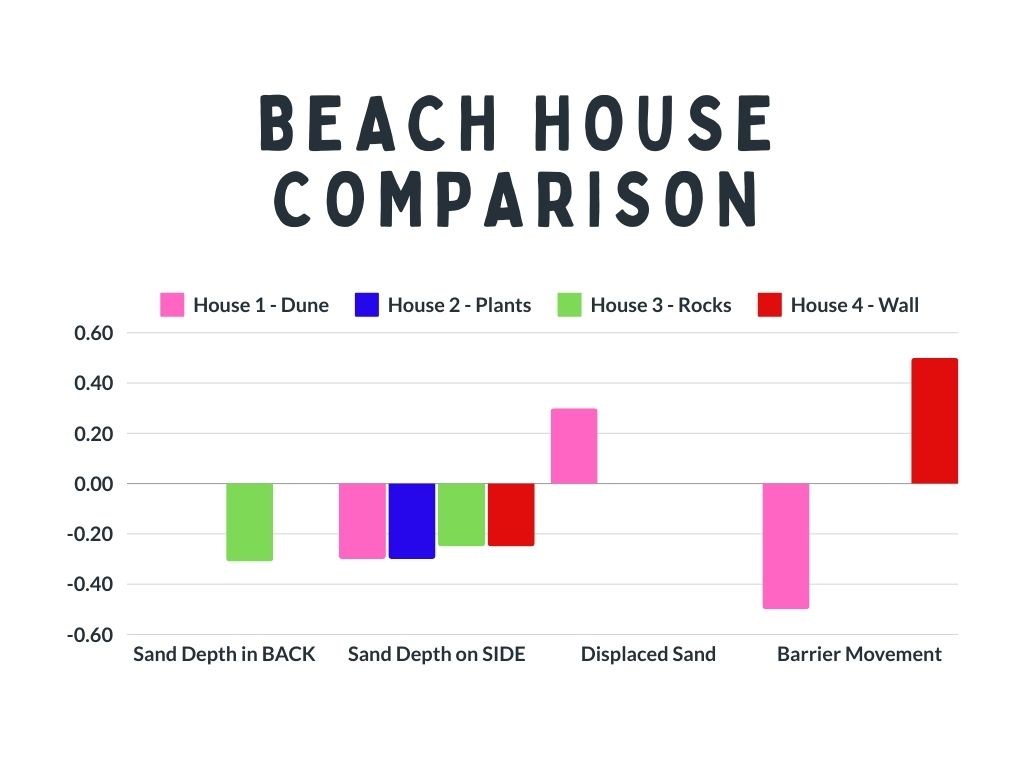
Need to Rent something to enjoy our area?
Check out everything we have to offer to rent.
